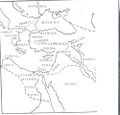Assyria
| Author: Laxman Burdak, IFS (R). |
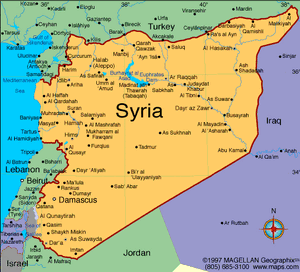
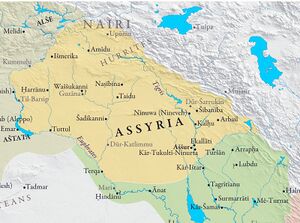
Assyria (Aššūrāyu) was a major Mesopotamian East Semitic kingdom, and often empire, of the Ancient Near East. Syria in Western Asia derives its name from Assyria.[1]
Variants
- Syria and Syrians (Anabasis by Arrian,p. 87, 91, 140, 152, 156, 173, 285, 308, 380, 407.
- Assyria and Assyrians (Anabasis by Arrian, p. 87, 89. 91, 154, 156, 172, 380, 407, 411-413.)
Location
Centered on the Upper Tigris river, in northern Mesopotamia (modern northern Iraq, northeastern Syria and southeastern Turkey) the Assyrians came to rule powerful empires at several times, the last of which grew to be the largest and most powerful empire the world had yet seen.
Origin of name
Assyria is named after its original capital, the ancient city of Aššur, which dates to c. 2600 BC, originally one of a number of Akkadian speaking city states in Mesopotamia. Assyria was also sometimes known as Subartu and Azuhinum prior to the rise of the city-state of Ashur, after which it was Aššūrāyu, and after its fall, from 605 BC through to the late seventh century AD variously as Achaemenid Assyria, and also referenced as Atouria, Ator, Athor, and sometimes as Syria which etymologically derives from Assyria[2] according to Strabo, Syria (Greek), Assyria (Latin) and Asōristān (Middle Persian). "Assyria" can also refer to the geographic region or heartland where Assyria, its empires and the Assyrian people were (and still are) centered.
Geography of Ancient Assyria
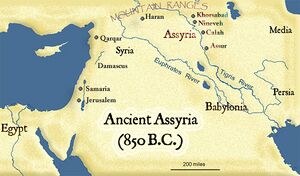
Ancient Assyria was generally the northern half of Mesopotamia, while the southern half was generally referred to as Babylonia. The word "Mesopotamia" comes to us from ancient Greece and means the land "between the rivers", referring to the Tigris and Euphrates rivers. The region around ancient Assyria was filled with hills and valleys. The land was very fertile for farming because it had an abundance of rains throughout the seasons, with lots of water in the nearby rivers and flowing down from the mountains. The mountains also brought plenty of timber, metals, and limestone. [3]
Syrian Desert
The Syrian Desert (Arabic: بادية الشام Bādiyat Ash-Shām), also known as the North Arabian Desert,[4] the Jordanian steppe, or the Badiya,[5] is a region of desert, semi-desert and steppe covering 500,000 square kilometers of the Middle East, including parts of southern Syria, eastern Jordan, northern Saudi Arabia, and western Iraq. It accounts for 85% of the land area of Jordan[6] and 55% of Syria.[7] To the south it borders and merges into the Arabian Desert.[8] The land is open, rocky or gravelly desert pavement, cut with occasional wadis.
Location and name: The desert is bounded by the Orontes Valley and the volcanic field of Harrat al-Shamah to the west, and by the Euphrates to the east. In the north, the desert gives way to the more fertile areas and to the south it runs into the deserts of the Arabian Peninsula.[9]
Several parts of the Syrian Desert have been referred to separately such as the Palmyrene desert around Palmyra, and the Homs desert.[10] The eastern section of the Syrian Desert, that within borders of Iraq, can be referred to (within Iraqi context) as the Western Desert.[11]
Mention by Pliny
Pliny[12] mentions Mesopotamia....The whole of Mesopotamia formerly belonged to the Assyrians, being covered with nothing but villages, with the exception of Babylonia1 and Ninus.2 The Macedonians formed these communities into cities, being prompted thereto by the extraordinary fertility of the soil.
1 The great seat of empire of the Babylonio-Chaldæan kingdom. It either occupied the site, it is supposed, or stood in the immediate vicinity of the tower of Babel. In the reign of Labynedus, Nabonnetus, or Bel- shazzar, it was taken by Cyrus. In the reign of Augustus, a small part only of Babylon was still inhabited, the remainder of the space within the walls being under cultivation. The ruins of Babylon are found to commence a little south of the village of Mohawill, eight miles north of Hillah.
2 Nineveh. See c. 16 of the present Book.
History
Assyria was existing as an independent state for a period of approximately nineteen centuries from c. 2500 BC to 605 BC, spanning the Early Bronze Age through to the late Iron Age. For a further thirteen centuries, from the end of the 7th century BC to the mid-7th century AD, it survived as a geo-political entity, for the most part ruled by foreign powers, although a number of small Neo-Assyrian states such as Assur, Adiabene, Osroene and Hatra arose at different times between the 1st century BC and late 3rd century AD.
As a substantial part of the greater Mesopotamian "cradle of civilization" which included Sumer, Akkad and much later Babylonia, Assyria was at the height of technological, scientific and cultural achievements for its time. At its peak, the Assyrian empire stretched from Cyprus in the Mediterranean Sea to Persia (Iran), and from what is now Armenia to the Arabian Peninsula and Egypt.
Assyria is named for its original capital, the ancient city of Aššur (a.k.a. Ashur) which dates to c. 2600 BC (located in what is now the Saladin Province of northern Iraq), originally one of a number of Akkadian city states in Mesopotamia. In the 25th and 24th centuries BC, Assyrian kings were pastoral leaders, and from the late 24th century BC became subject to Sargon of Akkad, who united all the Akkadian Semites and Sumerian-speaking peoples of Mesopotamia under the Akkadian Empire, which lasted from c. 2334 BC to 2154 BC. Following the fall of the Akkadian Empire c. 2154 BC,[13] and the short lived succeeding Neo-Sumerian Empire which ruled southern Assyria but not the north, Assyria regained full independence.
The history of Assyria proper is roughly divided into three periods, known as Old Assyrian, Middle Assyrian and Neo-Assyrian. These terms are in wide use in Assyrology and roughly correspond to the early to Middle Bronze Age, Late Bronze Age and Early Iron Age, respectively. In the Old Assyrian period, Assyria established colonies in Asia Minor and the Levant and, under king Ilushuma, it asserted itself over southern Mesopotamia. From the mid 18th century BC, Assyria came into conflict with the newly created state of Babylonia, which eventually eclipsed the far older Sumero-Akkadian states in the south, such as Ur, Isin, Larsa and Kish.
Assyria experienced fluctuating fortunes in the Old Assyrian period. Assyria became a regionally powerful nation with the Old Assyrian Empire from the late 21st century to the mid 18th century BC. Following this, it found itself under Babylonian and Mitanni-Hurrian domination for short periods in the 18th and 15th centuries BC respectively, and another period of great power occurred with the rise of the Middle Assyrian Empire (from 1365 BC to 1056 BC), which included the reigns of great kings, such as Ashur-uballit I, Arik-den-ili, Tukulti-Ninurta I and Tiglath-Pileser I. During this period, Assyria overthrew the Mitanni-Empire and eclipsed both the Hittite Empire and Egyptian Empire in the Near East.
Beginning with the campaigns of Adad-nirari II from 911 BC,[14] it again became a great power over the next three centuries, overthrowing the Twenty-fifth dynasty of Egypt and conquering Egypt,[15] Babylonia, Elam, Urartu/Armenia, Media, Persia, Mannea, Gutium, Phoenicia/Canaan, Aramea (Syria), Arabia, Israel, Judah, Edom, Moab, Samarra, Cilicia, Cyprus, Chaldea, Nabatea, Commagene, Dilmun, the Hurrians, Sutu and Neo-Hittites, driving the Ethiopians and Nubians from Egypt,[16] defeating the Cimmerians and Scythians and exacting tribute from Phrygia, Magan and Punt among others.[17]
After its fall (between 612 BC and 605 BC), Assyria remained a province and geo-political entity under the Babylonian, Median, Achaemenid, Seleucid, Parthian, Roman and Sassanid empires until the Arab Islamic dominance of [ Mesopotamia]] in the mid-7th century, when it was finally dissolved, after which the remnants of the Assyrian people (by now almost exclusively Eastern Rite Christians) gradually became a minority in their homeland.[18]
Migration of Nagas to India
Dr Naval Viyogi[19] writes that....Certain Nagavanshi tribes of Assyria or Sumer came to India along with the names of their kings in a period after 3000 B. C. or roughly Indus Valley period (2700-1600 BC). Either the knowledge of Nagavanshi names and words was transferred to ojhas or priests or they were themselves among the immigrants. Although it is a farfetched idea, yet I think this will be the most acceptable view-point, because verses were composed at a very later period, the composer would have belonged to the institution of immigrant priest class. It is equally possible that Atharv-Veda would have been related to the black section of Rishi of Assyrian immigrants like wise a section of Yajurveda or Kanva as suggested by some scholars[20]. There are clear evidences of Indus seals or seal Impressions with figures of Nagas or serpents depicted on them. Similarly there is another supporting evidence of Rigvedic description (lV-28-l) of Nagas also. [21]
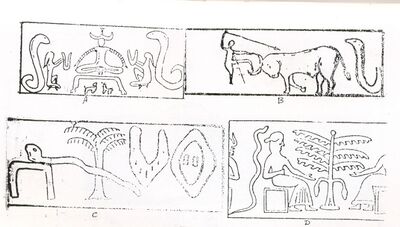
To understand this important secret we have to study the available evidences of Naga worship in Babylonia, Sumer and Assyria. (see Illustration Naga Seals from Indus Valley) James Fergusson [22] produces detail of such evidences as under,
- "In addition to the Tyrian coins and other monuments which in themselves would suffice to prove the prevalence of serpent worship on the seaboard of Syria, we have a direct testimony in a quotation from Sanchoniathon, an author who is supposed to have lived before the Trojan War. This passage is in itself sufficient to throw light on the feelings of the ancients on this subject. It may be worthwhile to quote it fully. Taautus attributed a certain divine nature to dragons and serpents, an opinion which was afterwards adopted both by the phoenicians and Egyptians. He teaches that this genus of animals abounds in force and spirit more than any other reptiles; that there is something fiery in their nature, and though possessing neither feet nor any external members for motion common to other animals, they are yet more rapid in their motion than any other. Not only has it the power of renewing its youth, but in doing so receives an increase of size and strength, so that after having run through a certain term of years it is again absorbed within itself. For these reasons this class of animals was admitted into temples, and used in sacred mysteries. By the Phoenicians they were called the good demon, which was the term also applied by the Egyptians to Cneph. who added to him the head of a hawk to symbolize the vivacity of that bird.
List of rivers of Syria
Tributaries are listed under the river into which they flow.
Flowing into the Mediterranean
- Orontes River (Orontes (Asi))
- Nahr al-Kabir al-Shamali, or Northern Great River
- Nahr al-Kabir al-Janoubi, or Southern Great River (On the border between Syria and Lebanon)
Flowing into the Persian Gulf by the Shatt al-Arab:
Flowing into endorheic basins
Aleppo basin
Ghouta oasis
Al-Hijanah Lake
Dead Sea
- Jordan River
- Yarmouk (On the border between Syria and Jordan)
- Banias River
Jat History
The country Assyria or Syria derives its name from Asiaghs. The Asiagh people were inhabitants of Asirgarh. One group of them migrated to Europe. Another group moved to Jangladesh. The origin of word Asiagh is from Sanskrit word "Asii" meaning sword. According to Kautilya the people who depended on "Asii" (sword) for their living were known as Asiagh.
Ram Swarup Joon[23] writes that Pliny has written that during a conflict between KhanKesh, a province in Turkey, and Babylonia, they sent for the Sindhu Jats from Sindh. These soldiers wore cotton uniforms and were experts in naval warfare. On return from Turkey they settled down in Syria. They belonged to Hasti dynasty. Asiagh Jats ruled Alexandria in Egypt. Their title was Asii.
It is confirmed by different historical and geographical works, as cited by Maulana Mubarakpuri that Jats had settled in large number in Antioc and coastal town of Syria under the patronage of the pious and Umayyad caliphate (Khilafat-e-Rashidah and Banu Umayyab) [24], [25]
Bhim Singh Dahiya[26] writes that Raja Ben/Ven Chakravarti, (the Chakwa Ben of the legends) is famous in India from Punjab to Bengal, though he is not allotted any place in the present history. It was known that the Vens had played an important role in the history of Central Asia from very ancient times. One of their principal cities was Ardinis (the city of the Sungod) also called Musasir, Menuas (810 B.C.), the grandson of Sarduris I, then subjugated the other Jat clans. "Parsuas (present Parsvals) had already been attacked by Ispuinis, and Menuas now proceeded to subdue the Manna, farther east, on the southern side of Lake Urmia". [27] He brought the Diaus, the Dia or Dayaeni of the Assyrians (present Dahiya clan) under control on the banks of Euphrates, which was made the western boundary of the kingdom. Menuas built many canals through the mountains which were cut open, and one of the canals is now called Shamiram Suo. He built the city of Menuasgert (Melazgert). His son, Argistis I, annexed the territories of the Etius and the Dayaeni. Mileds (Mardii of Herodotus) were brought under control. Sarduris II, his son fought many wars with the Assyrians and won them. He proclaimed his victory over Ashur Nirari V (754-745 B.C.). Later on under Tiglath Pilesar III Assyria avenged the defeats and Sargon of Assyria claims to have destroyed a city of Sarduris, named Riar.
DNA study on Y-STR Haplogroup Diversity in the Jat Population
David G. Mahal and Ianis G. Matsoukas[28] conducted a scientific study on Y-STR Haplogroup Diversity in the Jat Population of which brief Conclusion is as under:
The Jats represent a large ethnic community that has inhabited the northwest region of India and Pakistan for several thousand years. It is estimated the community has a population of over 123 million people. Many historians and academics have asserted that the Jats are descendants of Aryans, Scythians, or other ancient people that arrived and lived in northern India at one time. Essentially, the specific origin of these people has remained a matter of contention for a long time. This study demonstrated that the origins of Jats can be clarified by identifying their Y-chromosome haplogroups and tracing their genetic markers on the Y-DNA haplogroup tree. A sample of 302 Y-chromosome haplotypes of Jats in India and Pakistan was analyzed. The results showed that the sample population had several different lines of ancestry and emerged from at least nine different geographical regions of the world. It also became evident that the Jats did not have a unique set of genes, but shared an underlying genetic unity with several other ethnic communities in the Indian subcontinent. A startling new assessment of the genetic ancient origins of these people was revealed with DNA science.
The human Y-chromosome provides a powerful molecular tool for analyzing Y-STR haplotypes and determining their haplogroups which lead to the ancient geographic origins of individuals. For this study, the Jats and 38 other ethnic groups in the Indian subcontinent were analyzed, and their haplogroups were compared. Using genetic markers and available descriptions of haplogroups from the Y-DNA phylogenetic tree, the geographic origins and migratory paths of their ancestors were traced.
The study demonstrated that based on their genetic makeup, the Jats belonged to at least nine specific haplogroups, with nine different lines of ancestry and geographic origins. About 90% of the Jats in our sample belonged to only four different lines of ancestry and geographic origins:
1. Haplogroup L (36.8%)- The origins of this haplogroup can be traced to the rugged and mountainous Pamir Knot region in Tajikistan.
2. Haplogroup R (28.5%): From somewhere in Central Asia, some descendants of the man carrying the M207 mutation on the Y chromosome headed south to arrive in India about 10,000 years ago (Wells, 2007). This is one of the largest haplogroups in India and Pakistan. Of its key subclades, R2 is observed especially in India and central Asia.
3. Haplogroup Q (15.6%): With its origins in central Asia, descendants of this group are linked to the Huns, Mongols, and Turkic people. In Europe it is found in southern Sweden, among Ashkenazi Jews, and in central and Eastern Europe such as, the Rhône-Alpes region of France, southern Sicily, southern Croatia, northern Serbia, parts of Poland and Ukraine.
4. Haplogroup J (9.6%): The ancestor of this haplogroup was born in the Middle East area known as the Fertile Crescent, comprising Israel, the West Bank, Jordon, Lebanon, Syria, and Iraq. Middle Eastern traders brought this genetic marker to the Indian subcontinent (Kerchner, 2013).
5.-9. Haplogroups E, G, H, I, T (9.5%): The ancestors of the remaining five haplogroups E, G, H, I, and T can be traced to different parts of Africa, Middle East, South Central Asia, and Europe (ISOGG, 2016).
Therefore, attributing the origins of this entire ethnic group to loosely defined ancient populations such as, Indo-Aryans or Indo-Scythians represents very broad generalities and cannot be supported. The study also revealed that even with their different languages, religions, nationalities, customs, cuisines, and physical differences, the Jats shared their haplogroups with several other ethnic groups of the Indian subcontinent, and had the same common ancestors and geographic origins in the distant past. Based on recent developments in DNA science, this study provided new insights into the ancient geographic origins of this major ethnic group in the Indian subcontinent. A larger dataset, particularly with more representation of Muslim Jats, is likely to reveal some additional haplogroups and geographical origins for this ethnic group.
Phoenician god: Hercules
E. J. Chinnock[29] writes....The Phoenician god Melkarth (lord of the city), whom the Syrians called Baal (lord), was supposed to be identical with the Grecian Heracles, or Hercules, who was the mythical ancestor of the Macedonian kings. Curtius (iv. 7) tells us that Alexander affirmed he had been ordered by an oracle to sacrifice in Tyre to Heracles. Gesenius informs us that a Maltese inscription identifies the Tyrian Melkarth with Heracles.
Ch.8 Description of Darius-III's Army at Arbela against Alexander
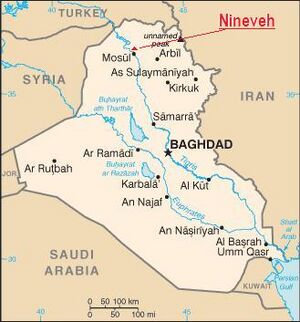
They come to the aid of Darius-III (the last king of the Achaemenid Empire of Persia) and were part of alliance in the battle of Gaugamela (331 BC) formed by Darius-III in war against Alexander the Great at Arbela, now known as Arbil, which is the capital of Kurdistan Region in northern Iraq.
Arrian[30] writes....Alexander therefore took the royal squadron of cavalry, and one squadron of the Companions, together with the Paeonian scouts, and marched with all speed; having ordered the rest of his army to follow at leisure. The Persian cavalry, seeing Alexander, advancing quickly, began to flee with all their might. Though he pressed close upon them in pursuit, most of them escaped; but a few, whose horses were fatigued by the flight, were slain, others were taken prisoners, horses and all. From these they ascertained that Darius with a large force was not far off. For the Indians who were conterminous with the Bactrians, as also the Bactrians themselves and the Sogdianians had come to the aid of Darius, all being under the command of Bessus, the viceroy of the land of Bactria. They were accompanied by the Sacians, a Scythian tribe belonging to the Scythians who dwell in Asia.[1] These were not subject to Bessus, but were in alliance with Darius. They were commanded by Mavaces, and were horse-bowmen. Barsaentes, the viceroy of Arachotia, led the Arachotians[2] and the men who were called mountaineer Indians. Satibarzanes, the viceroy of Areia, led the Areians,[3] as did Phrataphernes the Parthians, Hyrcanians, and Tapurians,[4] all of whom were horsemen. Atropates commanded the Medes, with whom were arrayed the Cadusians, Albanians, and Sacesinians.[5] The men who dwelt near the Red Sea[6] were marshalled by Ocondobates, Ariobarzanes, and Otanes. The Uxians and Susianians[7] acknowledged Oxathres son of Aboulites as their leader, and the Babylonians were commanded by Boupares. The Carians who had been deported into central Asia, and the Sitacenians[8] had been placed in the same ranks as the Babylonians. The Armenians were commanded by Orontes and Mithraustes, and the Cappadocians by Ariaoes. The Syrians from the vale between Lebanon and Anti-Lebanon (i.e. Coele-Syria) and the men of Syria which lies between the rivers[9] were led by Mazaeus. The whole army of Darius was said to contain 40,000 cavalry, 1,000,000 infantry, and 200 scythe-bearing chariots.[10] There were only a few elephants, about fifteen in number, belonging to the Indians who live this side of the Indus.[11] With these forces Darius had encamped at Gaugamela, near the river Bumodus, about 600 stades distant from the city of Arbela, in a district everywhere level;[12] for whatever ground thereabouts was unlevel and unfit for the evolutions of cavalry, had long before been levelled by the Persians, and made fit for the easy rolling of chariots and for the galloping of horses. For there were some who persuaded Darius that he had forsooth got the worst of it in the battle fought at Issus, from the narrowness of the battle-field; and this he was easily induced to believe.
1. Cf. Aelian (Varia Historia, xii. 38).
2. Arachosia comprised what is now the south-east part of Afghanistan and the north-east part of Beloochistan.
3. Aria comprised the west and north-west part of Afghanistan and the east part of Khorasan.
4. Parthia is the modern Khorasan. Hyrcania was the country south and south-east of the Caspian Sea. The Tapurians dwelt in the north of Media, on the borders of Parthia between the Caspian passes. Cf. Ammianus, xxiii. 6.
5. The Cadusians lived south-west of the Caspian, the Albanians on the west of the same sea, in the south-east part of Georgia, and the Sacesinians in the north-east of Armenia, on the river Kur.
6. "The Red Sea was the name originally given to the whole expanse of sea to the west of India as far as Africa. The name was subsequently given to the Arabian Gulf exclusively. In Hebrew it is called Yam-Suph (Sea of Sedge, or a seaweed resembling wool). The Egyptians called it the Sea of Weeds.
7. The Uxians occupied the north-west of Persis, and Susiana was the country to the north and west of Persis.
8. The Sitacenians lived in the south of Assyria. ἐτετάχατο. is the Ionic form for τεταγμἑνοι ἦσαν.
9. The Greeks called this country Mesopotamia because it lies between the rivers Euphrates and Tigris. In the Bible it is called Paddan-Aram (the plain of Aram, which is the Hebrew name of Syria). In Gen. xlviii. 7 it is called merely Paddan, the plain. In Hos. xii. 12, it is called the field of Aram, or, as our Bible has it, the country of Syria. Elsewhere in the Bible it is called Aram-naharaim, Aram of the two rivers, which the Greeks translated Mesopotamia. It is called "the Island," by Arabian geographers.
10. Curtius (iv. 35 and 45) states that Darius had 200,000 infantry, 45,000 cavalry, and 200 scythed chariots; Diodorus (xvii. 53) says, 800,000 infantry, 200,000 cavalry, and 200 scythed chariots; Justin (xi. 12) gives 400,000 foot and 100,000 horse; and Plutarch (Alex., 31) speaks of a million of men. For the chariots cf. Xenophon (Anab., i 8, 10); Livy, xxxvii. 41.
11. This is the first instance on record of the employment of elephants in battle.
12. This river is now called Ghasir, a tributary of the Great Zab. The village Gaugamela was in the district of Assyria called Aturia, about 69 miles from the city of Arbela, now called Erbil.
इतिहास
ठाकुर देशराज[31] ने लिखा है .... यूरोप के लोग जाटों को यूरोप में असीरिया से आया हुआ मानते हैं। यह असीरिया ईरान का ही प्रांत है। जिसे मालवा के असीगढ़ से जाकर जाटों ने बसाया था। यहीं पर एक लाहियान जिला भी है। भारत के लोहियान जाट इसी जिले से लौटे हुए हैं।
अंताखी
विजयेन्द्र कुमार माथुर[32] ने लेख किया है ...अंताखी (AS, p.4) सिरिया या शाम देश में स्थित ऐंटिओकस नामक स्थान का प्राचीन संस्कृत रूप जिसका उल्लेख महाभारत में है-'अंताखी चैव रोमां च यवनानां पुरं तथा, द्तैरेव वशंचक्रे करं चैनानदापयत्' सभा0 31,72; अर्थात् सहदेव ने अपनी दिग्विजय-यात्रा में अंताखी, रोम और यवनपुर के शासकों को केवल दूत भेज कर ही वश में कर लिया और उन पर कर लगाया। (टि. इस श्लोक का पाठांतर- 'अटवीं च पुरीं रम्यां यवनानां पुरंतथा' है)
सीरिया या असीरिया
दलीप सिंह अहलावत लिखते हैं -
सीरिया- इस देश को श्याम भी कहते हैं, तात्पर्य सेनीटोरियम श्री कृष्णजी से है। एशिया माईनर (लघुएशिया), सीरिया या शाम, अरब और तुर्की साम्राज्य ‘ओटोमेन ऐम्पायर’ कहलाता है जो अपभ्रंश है ‘यदुमनु’ का। तात्पर्य है यदुवंशियों का साम्राज्य। सीरिया की राजधानी बेबीलोन थी जो श्रीकृष्णजी के उत्तराधिकारी महाराज बाहुबल के नाम पर है। [33]
असीरिया - जो आज कुर्दिस्तान प्रदेश कहलाता है। यह ईरान और इराक़ के बीच में है। इसको मालवा के असिगढ़ के असि-असियाग जाटों ने जाकर बसाया था। यहां पर एक लाहियान जिला भी है। भारत के लोहियान जाट इसी जिले से लौटे हुए हैं। आज भी इस प्रान्त में जाटों की संख्या अधिक है। इन लोगों की शक्ल-व-सूरत, चाल-ढाल तथा वस्त्र आदि भारतीय जाटों से मिलते जुलते हैं, केवल ये लोग मुसलमानधर्मी हैं।[34]
शाल्मल द्वीप
शाल्मल द्वीप (AS, p.896): शाल्मल द्वीप पौराणिक भूगोल की संकल्पना के अनुसार पृथ्वी के सप्तद्वीपों में से एक है। विष्णु पुराण के अनुसार - 'जम्बूप्लक्षाहृदयौ द्वीपौ शाल्मलश्चापरो द्विज, कुश: क्रौंचस्तथा शाक: पुष्करश्चैव सप्तम:। विष्णु पुराण 2,2,5. ..... श्री नंदलाल डे के अनुसार यह असीरिया या चाल्डिया है।
जाट इतिहास
डॉ रणजीतसिंह[35] लिखते हैं....जाटों के विस्तार की पुष्टि एंटीक्विटी ऑफ जाट रेस के लेखक उजागर सिंह महल के विचारों से भी होती है। महल महोदय अपनी पुस्तक में लिखते हैं - "मैं अब विशालतम जाट साम्राज्य का वर्णन करता हूं जो कि मात्र भौगोलिक सीमाओं के कारण ही बड़ा नहीं था, अपितु इजिप्ट और असीरिया के साम्राज्यों से भी बड़ा था। यह स्मरण रखना चाहिए कि पर्शियन साम्राज्य जाट साम्राज्य की देन है और पर्शियन राजाओं में जाट रक्त विद्यमान है। जाटों के इस साम्राज्य को मेड़ा साम्राज्य कहते हैं[36] महल के मतानुसार जाटों ने रोमन साम्राज्य, स्पेन और ब्रिटेन तक को जीता था [37] [पृष्ठ.5]: इससे आगे वे लिखते हैं ....:"यूरोप की डेन्यूब नदी जाटों के पुरातात्विक इतिहास की दृष्टि से बड़ी महत्वपूर्ण है। इस नदी के दोनों किनारों पर जाट ही निवास करते थे। डेन्यूब नदी जाटों से इतनी संबंधित है कि वह उनके स्वप्नों में भी आती है।"
जर्तगण
डॉ. धर्मचंद्र विद्यालंकार[38] ने लिखा है....महर्षि यास्काचार्य ने ही तो जरितों किंवा जर्तों को ही गर्तास्यु भी बताया है; अर्थात वही जर्तगण भूतल में भवन बना कर भी नित्य निवास किया करते हैं. मध्यपूर्व के जार्डन (जर्तायन) जैसे देश के प्रेत (प्रेटा) नामक नगर में ईसा पूर्व प्रथम सहस्त्राब्दी के ऐसे ही शैलाश्रय उत्खनन में मिले हैं. जिनमें विधिवत रूप से ही पर्वत मालाओं को काट-काट कर भव्य स्तम्भ-संयुक्त विशाल गृह और आवास भवन बनाए हुए हैं. यह स्थान वर्तमान में मानव की आदिम भवन संबंधी संरचना है. लगभग उसी काल के यास्काचार्य यही हमें बता रहे हैं कि जर्त या जाट लोग ही भूतल में घर बना कर रहा करते थे.
सीरिया में जिस हयूक-सभ्यता किंवा असुर सभ्यता का पूर्ण परिचय पुरातत्वविदों को मिलता है, उसमें भी कच्ची मिट्टी के ही घर भूतल में निर्मित मिले हैं. असुर अवनिपाल जोकि असुरों का प्रथम प्रसिद्ध शासक माना जाता है, उसी के वीर वंशज हमें वर्तमान में बेनीवाल जैसे कुल नामधारी लोग दलितों से लेकर जाटों तक में मिलते हैं. बल्कि कश्मीर में बनिहाल और हरियाणा में एक बनवाली या बनिहाल जैसा प्राचीन पुरातात्विक स्थल भी विद्यमान हैं.
Gallery
-
Map of Syria in Middle East Countries
-
Western Central Asia
Further reading
- Jat Itihas by Thakur Deshraj (Hindi), 1934
- Ram Swarup Joon: History of the Jats, Rohtak, India (1938, 1967)
See also
References
- ↑ Y Odisho, George (1998). The sound system of modern Assyrian (Neo-Aramaic). Harrowitz. p. 8. ISBN 3-447-02744-4.
- ↑ Y Odisho, George (1998). The sound system of modern Assyrian (Neo-Aramaic). Harrowitz. p. 8. ISBN 3-447-02744-4.
- ↑ Geography of Ancient Assyria
- ↑ "Syrian Desert | Map & Facts | Britannica". www.britannica.com.
- ↑ Suttie, J.M.; Reynolds, Stephen G.; Batello, Caterina (2005). Grasslands of the World. FAO. p. 453. ISBN 978-92-5-105337-9.
- ↑ "Jordan Badia | The Hashemite Fund for Development of jordan Badia". www.badiafund.gov.jo.
- ↑ "The rangelands of the Syrian Arab Republic". FAO.
- ↑ Harris, Nathaniel; Parker, Steve (2003). Atlas of the World's Deserts. Taylor & Francis. p. 49. ISBN 978-1-57958-310-1.
- ↑ Betts, Alison (1996). The Harra and the Hamad : excavations and surveys in Eastern Jordan, vol. 1. England: Collis Publication. p. 1. ISBN 9781850756149.
- ↑ Annual Review, Volume 2. Institute for Defence Studies and Analyses. 1973. p. 476.
- ↑ Mudīrīyat al-Āthār al-Qadīmah al-ʻĀmmah (1964). "Sumer". 20. Directorate General of Antiquities.: 10. "The western desert of Iraq forms the eastern half of the Badiyat ash-Sham (The Syrian Desert)"
- ↑ Natural History by Pliny Book VI/Chapter 30
- ↑ Georges Roux (1964), Ancient Iraq, pp. 161–191.
- ↑ Georges Roux (1964), Ancient Iraq, pp. 161–191.
- ↑ Georges Roux (1964), Ancient Iraq, pp. 161–191.
- ↑ Georges Roux (1964), Ancient Iraq, pp. 161–191.
- ↑ Georges Roux (1964), Ancient Iraq, pp. 161–191.
- ↑ Parpola, Simo (2004). "National and Ethnic Identity in the Neo-Assyrian Empire and Assyrian Identity in Post-Empire Times" (PDF). Journal of Assyrian Academic Studies (JAAS)
- ↑ Dr Naval Viyogi: Nagas – The Ancient Rulers of India, p.12
- ↑ Chanda RP "Ibid" IC 25
- ↑ Dr Naval Viyogi: Nagas – The Ancient Rulers of India, p.11
- ↑ James Fergusson:Tree and Serpent Worship, P-10
- ↑ Ram Sarup Joon: History of the Jats/Chapter III, p.40-41
- ↑ Qazi Athar, pp, 66-67
- ↑ Zafarul Islam: Qazi Athar Mubarakpuri’s Studies on Jats, The Jats, Vol. II, Ed. Dr Vir Singh, Delhi, 2006. p. 27
- ↑ Jats the Ancient Rulers (A clan study)/The Antiquity of the Jats,p.297
- ↑ Cambridge Ancient History, Vol. IlI, p. 174.
- ↑ Y-STR Haplogroup Diversity in the Jat Population Reveals Several Different Ancient Origins
- ↑ [[[The Anabasis of Alexander/2b]], f.n.1
- ↑ The Anabasis of Alexander/3a, Ch.8
- ↑ Thakur Deshraj: Jat Itihas (Utpatti Aur Gaurav Khand)/Navam Parichhed,p.152
- ↑ Aitihasik Sthanavali by Vijayendra Kumar Mathur, p.4-5
- ↑ Jat History Dalip Singh Ahlawat/Chapter IV (Page 411)
- ↑ Jat History Dalip Singh Ahlawat/Chapter IV (Page 415)
- ↑ Jat Itihas By Dr Ranjit Singh/1.Jaton Ka Vistar, pp.4-5
- ↑ एंटीक्विटी ऑफ जाट रेस, पृष्ठ 9-7 ?
- ↑ एंटीक्विटी ऑफ जाट रेस, पृष्ठ 53-66
- ↑ Patanjali Ke Jartagana or Jnatrika Kaun The,p.14
Back to Jat Regions




